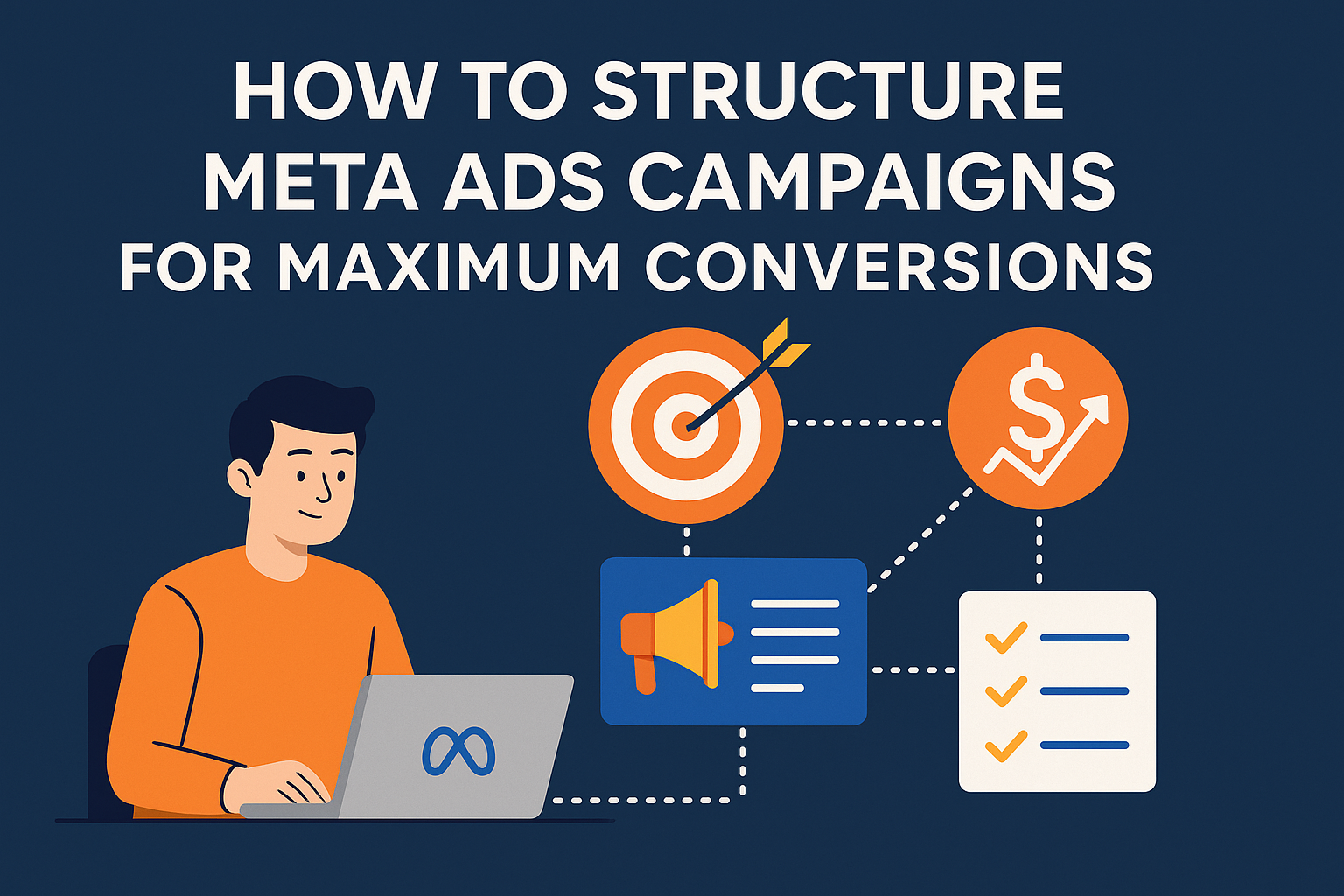How to Structure Meta Ads Campaigns for Maximum Conversions

Meta Ads, which many still call Facebook Ads, can be an absolute game changer when they’re set up right. The trouble is, most businesses either boost a post here and there or run a few ads without much planning. That usually leads to wasted budget and disappointing results.
If you want your campaigns to actually bring in sales, leads, or whatever your end goal is, you need a clear structure. Think of it like building a house—you wouldn’t just start hammering nails without a blueprint.
1. Pick the Right Campaign Objective
It might sound obvious, but plenty of advertisers choose the wrong campaign objective. Meta’s system works best when you tell it exactly what you want.
For example:
- Selling products? Go with Sales, not Traffic.
- Collecting leads? Use Leads with an instant form or a landing page.
- Building awareness? Awareness or Reach will do the job.
The point is, your objective guides the algorithm. If you choose incorrectly, you’re already starting on the wrong foot.
2. Keep Campaigns Purpose-Driven
Throwing all your ads into one campaign is like mixing all the ingredients for different dishes into the same pot—you’ll get something, but it won’t be what you wanted.
Instead, split campaigns based on their purpose:
- Cold audience campaigns: For people who have never heard of you.
- Warm audience campaigns: For people who’ve visited your site or engaged with your content.
- Retargeting campaigns: For people who were one step away from buying but didn’t.
This lets you tailor the message and budget for each group instead of treating everyone the same.
3. Use Ad Sets for Smart Targeting
Ad sets are where you control who sees your ads. This is where a lot of people get lazy, but good targeting can make or break your results.
A few tips:
- Group similar audiences together and keep them separate from other groups.
- Avoid overlapping audiences so you’re not bidding against yourself.
- Decide if you want to set budgets at the ad set level or let Meta’s Campaign Budget Optimization spread it out.
When I run campaigns, I usually test two or three audience types side by side. This way, I can drop the ones that aren’t performing and push more budget into the winners.
4. Match Creatives to the Audience
One of the biggest mistakes I see? Showing the same ad to everyone.
Cold audiences need attention-grabbing content—something that makes them stop scrolling and pay attention. Warm audiences respond better to proof: reviews, before-and-after shots, or testimonials. People at the buying stage often just need a small nudge, like a limited-time offer or free delivery.
If you’re not sure what will work, run two or three variations in the same ad set. Let the numbers show you the winner.
If you want help creating scroll-stopping creatives, check out our Social Media Marketing Services. We design ad content that doesn’t just look good—it converts.
5. Follow a Funnel Approach
Here’s a simple way to think about it:
- Top of Funnel (TOF) – Attract new people with valuable or entertaining content.
- Middle of Funnel (MOF) – Build trust by showing how you solve their problem.
- Bottom of Funnel (BOF) – Give them a reason to take action now.
This approach means you’re not shouting “buy now” to someone who’s just meeting you for the first time. You’re guiding them step by step.
6. Track Everything
Without tracking, you’re flying blind. Install the Meta Pixel on your site and, if possible, set up Conversion API so you’re still getting good data even with privacy changes. Track key actions like:
- Add to Cart
- Purchase
- Form Submissions
This isn’t just for reporting—it helps Meta learn who is most likely to take the action you want.
7. Test and Scale Slowly
Once you’ve got a good structure, the next step is to keep testing. Try different audiences, ad formats, and messages. When you find something that works, scale it up slowly. Jumping from ₹1,000 a day to ₹10,000 overnight usually resets the learning phase and kills performance.
Final Thoughts
Meta Ads work best when there’s a plan behind them. With the right structure, you can guide strangers into becoming paying customers without wasting budget.
Keep your campaigns organized, match the message to the audience stage, and don’t forget to track what matters. Over time, you’ll not only improve your conversions—you’ll also make your ad spend work a lot harder for you.